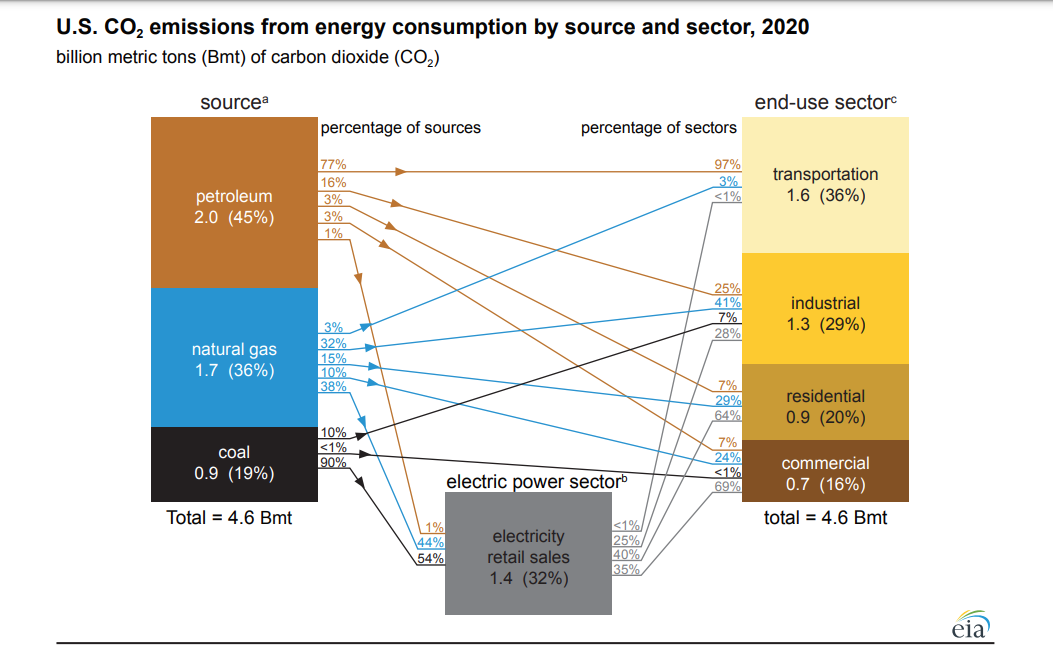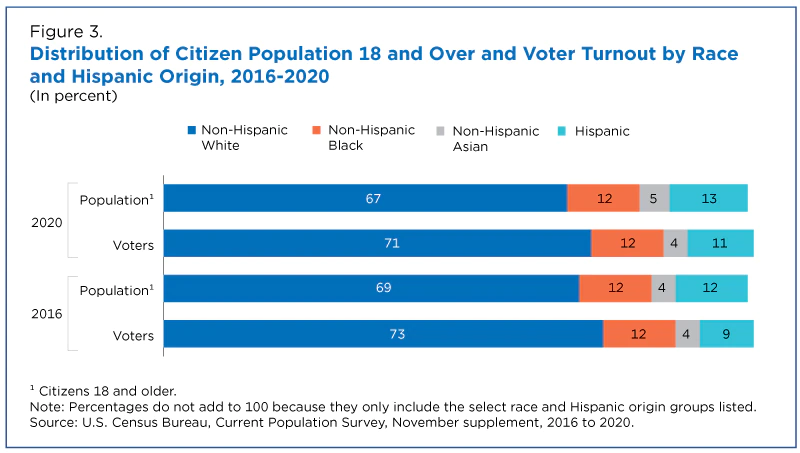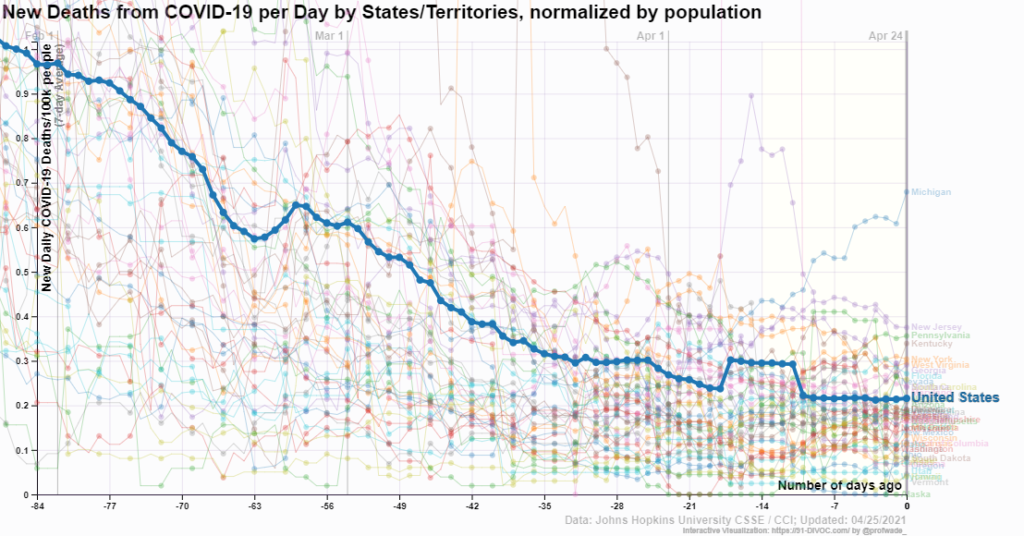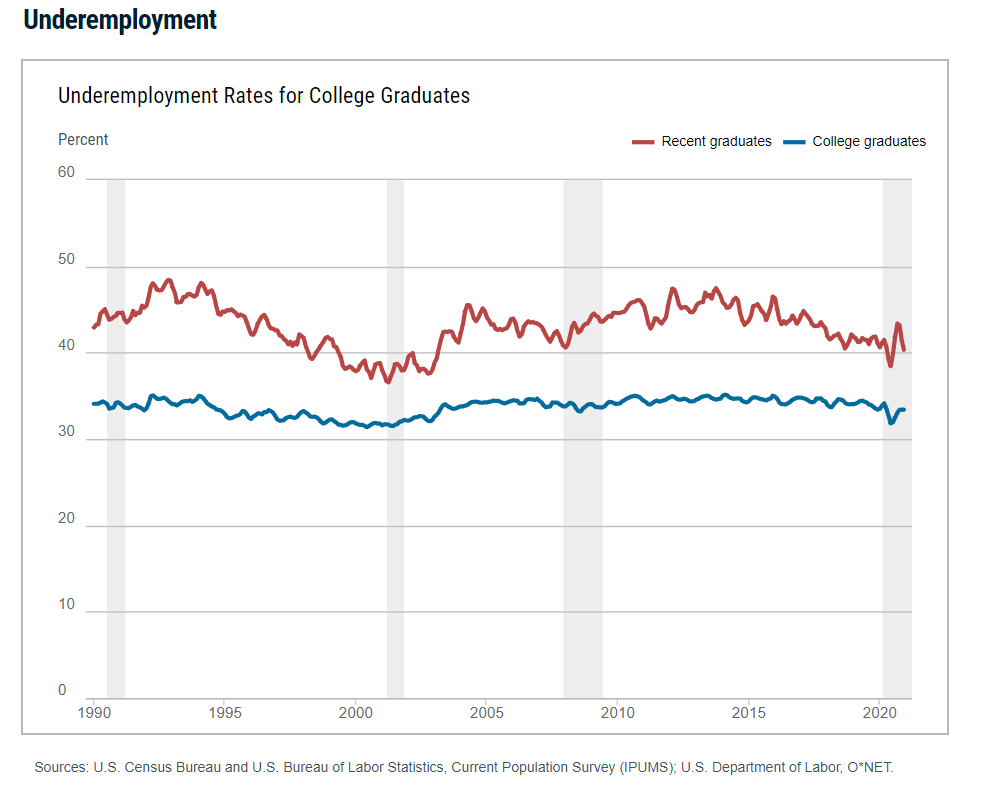 The CDC’s report, Provisional Mortality Data – United States 2020 (3/31/2021) provides the chart presented here. COVID-19 was the third leading cause of death, although there were only deaths attributed to COVID-19 for nine months of the year. There is also this:
The CDC’s report, Provisional Mortality Data – United States 2020 (3/31/2021) provides the chart presented here. COVID-19 was the third leading cause of death, although there were only deaths attributed to COVID-19 for nine months of the year. There is also this:
During January–December 2020, the estimated 2020 age-adjusted death rate increased for the first time since 2017, with an increase of 15.9% compared with 2019, from 715.2 to 828.7 deaths per 100,000 population. COVID-19 was the underlying or a contributing cause of 377,883 deaths (91.5 deaths per 100,000). COVID-19 death rates were highest among males, older adults, and AI/AN and Hispanic persons. The highest numbers of overall deaths and COVID-19 deaths occurred during April and December. COVID-19 was the third leading underlying cause of death in 2020, replacing suicide as one of the top 10 leading causes of death (6).
The findings in this report are subject to at least four limitations. First, data are provisional, and numbers and rates might change as additional information is received. Second, timeliness of death certificate submission can vary by jurisdiction. As a result, the national distribution of deaths might be affected by the distribution of deaths from jurisdictions reporting later, which might differ from those in the United States overall. Third, certain categories of race (i.e., AI/AN and Asian) and Hispanic ethnicity reported on death certificates might have been misclassified (7), possibly resulting in underestimates of death rates for some groups. Finally, the cause of death for certain persons might have been misclassified. Limited availability of testing for SARS-CoV-2, the virus that causes COVID-19, at the beginning of the COVID-19 pandemic might have resulted in an underestimation of COVID-19–associated deaths.
There is a table with data of total and covid deaths by age, sex, and race/ethnicity, as well as another chart.
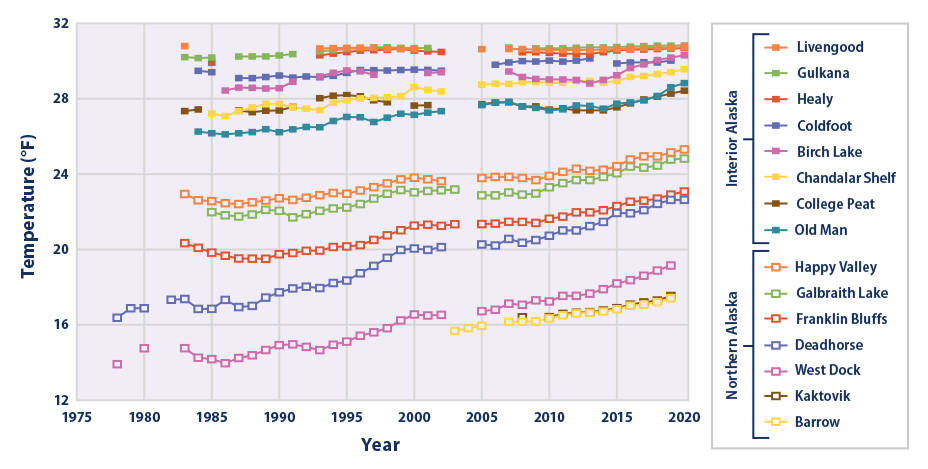 After about a 4 year hiatus, the EPA’s page Climate Change Indicators in the United Stats has been updated with “Twelve new indicators and several years of data have been added to EPA’s indicator suite.” One new indicator is Permafrost:
After about a 4 year hiatus, the EPA’s page Climate Change Indicators in the United Stats has been updated with “Twelve new indicators and several years of data have been added to EPA’s indicator suite.” One new indicator is Permafrost: